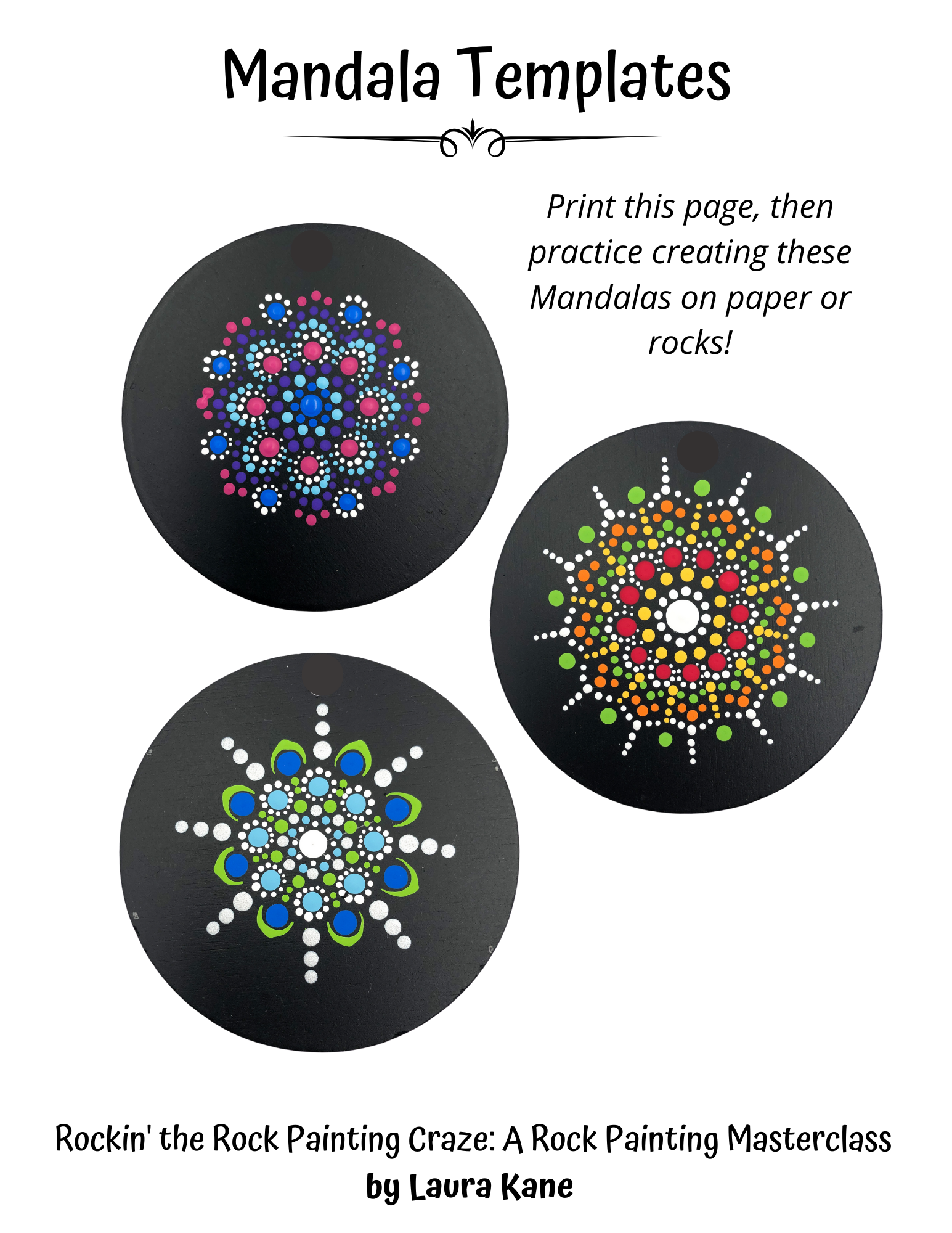ROCKS
“How many rocks do I need for this course?”
If you complete all of the projects in this masterclass, you will need the following supply of rocks:
Large rocks, sized 3-4 inches (approx. 4 rocks)
Medium rocks, sized 2-3 inches (approx. 3 rocks)
Small stones, sized 1-2 inches (you will need at least 70 of these)
“What rocks should I use for rock painting?”
That’s easy! Just go in your backyard or local park and pick up some rocks! Right???
… WRONG!
It’s a mistake to think you can paint on any old rock. Well, correction… you actually can paint on any old rock, but it won’t always be pretty. And we are aiming for pretty, right? You signed up for this course to take the next step from AMATEUR to PRO.
In this case, we DON’T want “any old rock.” We need to be a little choosy. Luckily for you, I have 4 years of trial and error under my belt, and I will share what I’ve learned with you!
When I first started rock painting as a hobby, I would be constantly on the lookout for rocks on the ground wherever I went. My husband recognized my “rock hungry” look. He would keep me in line by saying things like, “No, you can’t pick up that rock from that tree bed in the Target parking lot! That’s illegal!” or “I’m sure the neighbors don’t want to share their pebble flower beds with you!”
Sadly, I do not live near a natural source of rocks (river, lake, beach). I realized fairly quickly that I would need to shell out some money to BUY rocks. Believe me, I did not enjoy this idea. After all, rocks appear in nature all around us; why on earth should I BUY them? I got over that quickly. The gravel shards and craggy pebbles I picked up randomly were not good enough.
CRAFT STORES: I began my quest by looking in craft stores. There are small bags of rocks available at Michael’s and Hobby Lobby, but they are EXPENSIVE and I found that half of them cannot be used to paint on. I ended up having to toss many into my garden.
LANDSCAPE SUPPLY: Next, I tried using rocks meant for landscaping. This worked to a certain extent. I found that Mexican Beach Pebbles (available at Home Depot, Lowe’s, or WalMart) worked well, but here was the problem: I had to purchase these in large bags, and usually was only able to use about a fourth of a bag. The rest were broken or shaped strangely. This was a waste of money since, again, I had to toss most of it into my garden.
ONLINE STORES: I decided to see if my favorite shopping source, Amazon, had any rocks. I thought, “surely not, what about shipping costs?” Well, Amazon DOES have some sources for rocks for painting. However, they are VERY pricey. I see more and more options popping up as the rock painting craze takes flight, but none of them are cheap.
MY SOLUTION? I looked on Etsy. I don’t know why it took me that long; after all, I am an Etsy shop owner as well. Through trial and error, I found a couple of sources. Since then, I have not had to look elsewhere!
These two Etsy shops are my absolute FAVORITE sources for smooth, flat rocks. The owners of these two shops have given me permission to share their links with you. I have been keeping these shops a SECRET when people ask me where I get my great rocks… but now I am sharing them with you! YOU’RE WELCOME.
JDSticksandStones (Oswego, NY): the owners of this shop collect smooth rocks from the Great Lakes in their area. These stones vary in size from 1 to 4.5 inches and are extremely smooth. They are perfect for memory rocks, mandalas, paperweights, and other larger designs. Shipments arrive quickly and the rocks are already cleaned; you just need to rinse them off, but no scrubbing required. Their customer service is excellent!
PNWCoastalCreations (Port Angeles, WA): These beach rocks from Washington State are flatter and slightly more coarse than the ones from the link above. They are perfect for Story Stones and pocket rocks because of their light weight and thin style. I have also used these to create magnets; since they are flat, it’s easy to attach magnets with crafting glue such as E6000. These rocks arrive in clean condition, and customer service is amazing.
Final Note: If you are lucky enough to live near a source of smooth, flat rocks from a beach, river, or lake, YOU ROCK! Go out a grab some! Then share some with the rest of us. ;-)























































